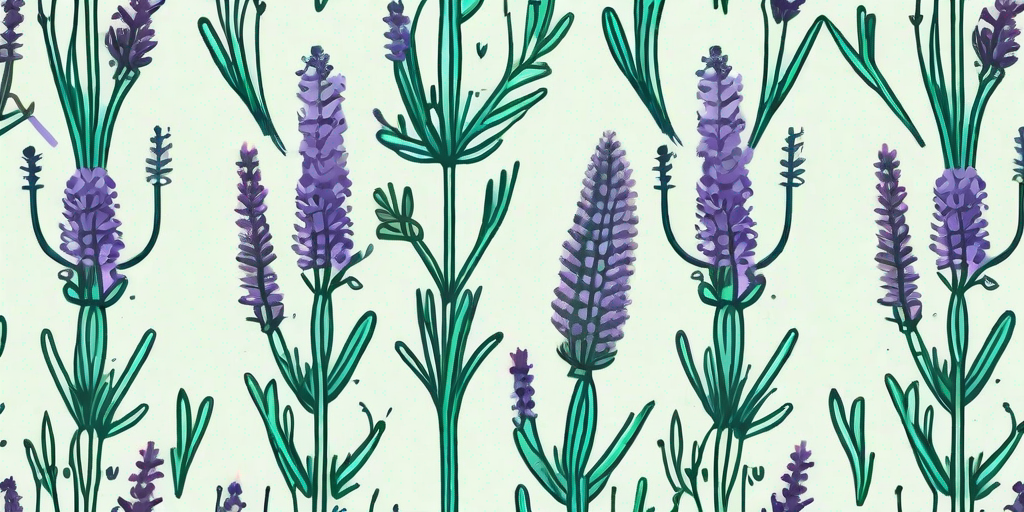
Lavender, the purple-hued plant with a fragrance that can transport you to a serene English countryside or a sun-drenched French field, has been a favourite of gardeners and perfume makers for centuries. But here's the million-dollar question: which reigns supreme - French or English lavender? Let's embark on a fragrant journey to find out.
History of Lavender
Before we dive into the battle, let's take a brief detour to understand the history of lavender. It's like understanding the backstory of your favourite superhero, except this hero doesn't wear a cape; it wears a crown of purple flowers.
The use of lavender dates back to ancient times. The Egyptians used it for mummification, and the Romans used it for bathing, cooking, and scenting the air. The name 'lavender' comes from the Latin 'lavare', which means 'to wash'. So, in essence, lavender is the ancient equivalent of your favourite bath bomb.
French Lavender vs English Lavender
Now, let's get down to the nitty-gritty: the differences between French and English lavender. It's like comparing croissants and scones, both delightful in their own ways but distinctly different.
French lavender, known scientifically as Lavandula dentata, is native to the Mediterranean region. It's known for its grey-green serrated leaves and butterfly-like flowers. It's like the flamboyant cousin who arrives at family gatherings with a flourish and a cloud of perfume.
English lavender, or Lavandula angustifolia, on the other hand, is native to the western Mediterranean, primarily the Pyrenees and Canary Islands. It's known for its narrow leaves and dense spikes of flowers. It's like the reserved cousin who quietly charms you with their subtle elegance and soothing scent.
Appearance
When it comes to appearance, French lavender is the showier of the two. Its flowers are larger and more vibrant, making it a favourite of gardeners looking to add a pop of colour to their gardens. English lavender, while more subdued, has a classic elegance that can't be overlooked.
English lavender typically grows in a compact, bushy shape, while French lavender has a looser form. So, if you're looking for a neat and tidy plant, English lavender might be your cup of tea. But if you prefer a more relaxed, laissez-faire vibe, French lavender could be your glass of wine.
Scent
The scent is where the real battle begins. French lavender has a strong, sweet fragrance that's often described as fruity or citrusy. It's like a bold perfume that announces your presence before you enter a room.
English lavender, on the other hand, has a more subtle, soothing scent. It's often described as sweet and herbaceous with a hint of pine. It's like a soft whisper of a fragrance that lingers in the air.
Uses of Lavender
Now that we've covered the basics, let's look at the different uses of French and English lavender. Spoiler alert: they're both incredibly versatile.
Culinary Uses
Yes, you read that right. Lavender isn't just for smelling; it's for eating too. French lavender is often used in French cuisine, particularly in the famous Herbes de Provence blend. It adds a unique, sweet flavour to dishes.
English lavender, on the other hand, is often used in baking and dessert recipes. It's like the secret ingredient that takes your cookies or cakes from good to 'Oh la la!'
Medicinal Uses
Both French and English lavender have a long history of medicinal use. French lavender is often used for its antiseptic and anti-inflammatory properties. It's like the plant version of a first aid kit.
English lavender is renowned for its calming and relaxing properties. It's often used in aromatherapy to help with sleep and anxiety. It's like a natural, fragrant chill pill.
FAQs
Which lavender is better for my garden?
It depends on what you're looking for. If you want a showy plant with a strong fragrance, go for French lavender. If you prefer a more subtle, elegant plant, choose English lavender.
Can I use both types of lavender in cooking?
Yes, but remember that French lavender has a stronger, more distinct flavour. Use it sparingly to avoid overpowering your dish.
Which lavender is better for medicinal use?
Both types have medicinal properties, but English lavender is often preferred for its calming effects.
Conclusion
So, which lavender reigns supreme? Well, it's a bit like asking whether wine is better than tea. They're both delightful in their own ways, and the best one really depends on your personal preferences. So, whether you're team French lavender with its flamboyant flowers and bold fragrance, or team English lavender with its elegant form and soothing scent, remember: in the end, we're all winners in the game of lavender.











